I saw this fiber in a swap and had to have it. I know what an alpaca is , I know what a vicuna is, I also know that alpacas are the descendants of vicunas, but what the hell is a paco-vicuna? A googling I will go……..
A paco – vicuna is basically a cross between an alpaca and a vicuna this happens all the time in south america where the vicunas run free without fences and the alpacas are sheparded without fences. I had the opportunity to talk to Chris Switzer at Switzer-Land Paco-Vicunas and Alpacas. She explained that their are very strict standard to meet paco-vicuna requirements. Most have to do with the micron count of the fiber. The reasons to breed paco-vicuna are many the vicuna which is still a threatened species ,difficult to raise in captivity, and are protected by laws because of their numbers. Paco – vicuna fiber is finer than that of the alpaca.
After talking to Chris I realized they were breeding to get the best of two worlds. The finest quality fiber and the most domesticated animals.
There are many classifications of this animal based on how close they come to being an actual vicuna. When I was researching I found 5 specifically but other sites had 3. I decided to go with what the Paco-Vicuna Registry had to say and go with 5.
I’m not going to go into all 5 specifics and bore you to death but I am going to show the differences between suri alpaca, huacaya alpaca, vicuna and paco-vicuna.
All information provided by Switzer-Land Paco-Vicunas and Alpacas and The Paco-Vicuna Registry.
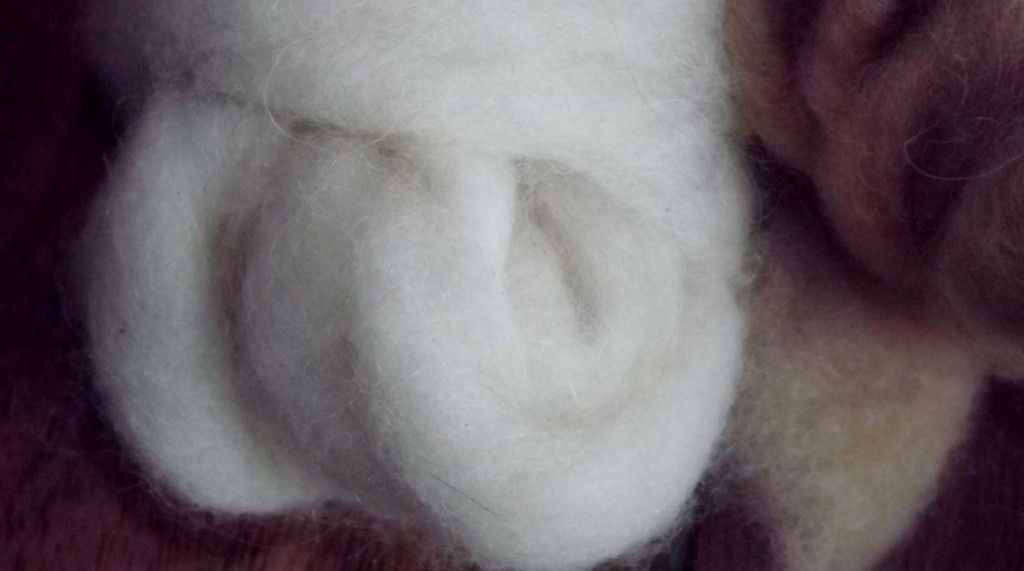
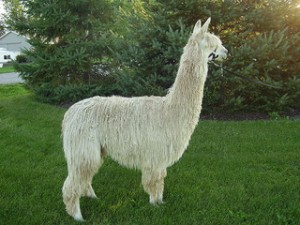
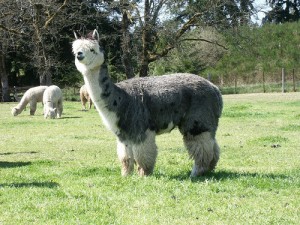
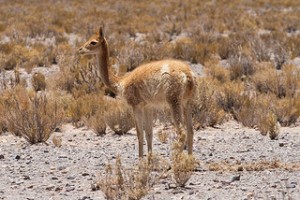
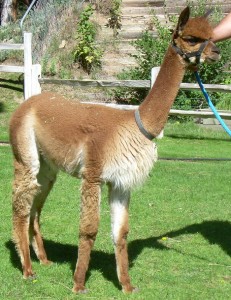
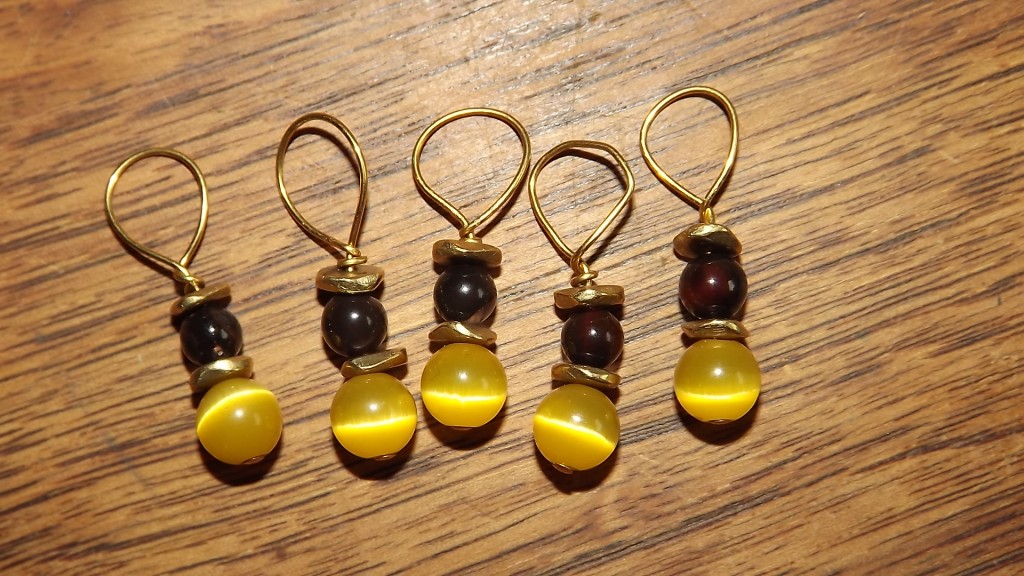










Well, I’m a lot more knowledgeable about hemp fiber and paco-vicuna fiber! Thanks, as always, for telling us so much about different fibers. It’s fascinating.
Hazel
You definitely post things that arouse the curiosity! Thanks again!
Wow I am really enjoying your blog. I had never seen a vicuna and never dreamed they could interbreed with alpaca. Thanks for the info.
The fiber kingdom (lol) is pretty interesting sometimes. They can also interbreed with guanacos and llamas. They are all close enough species-wise.
Hi, Brandi. How lucky to have some paco-vicuna! I love to spin the rare and odd fibers.
Just wanted to let you know that I’ve finally started spinning the Coopworth I won in your contest last spring. I’m loving the colors. I’m pretty sure I’ve never spun Coopworth before. Thanks!
It was total luck that I was able to get my hands on some of this fiber in a swap.
Very interesting post. I had never heard of a vicuna before. Lovely stitch markers.
Cool, and so very interesting. I don’t spin, but hope to do so one day, and I am also interested in dyeing yarn when then time comes (i.e. when I am out of nursing school and have time for actual life, haha). Hence, I enjoyed reading this post, and learning some new things. Many thanks for a nice post and the chance the win soe gorgeous stitch markers. Have a lovely day!
Very interesting. Thanks. Love to win those markers! Rav amchart
Wow, cool information! And they’re SO cute!
(InJuneau on Rav too)
How cute! I would love to win. thanks!
Thank you for a very interesting research article about the Paco Vicuna. I would certainly love to get my hands on some of that from your description.
The stitch markers are really lovely colors. Thank you so much for a great giveaway and Happy Holidays.
You can check out the farm that helped me with the info or if you want raw fleece I found this place. http://www.pacovicunahrf.com/f.....8;image=87
Love your post, always great to learn. Stitch markers are awesome
Rav trot26
A new factoid to impress my son with! we like to learn something new each day and now we have! Thanks. Love your stitchmarkers.
thanks!!!
Very Interesting!!! I really like your blog. Such pretty stitch markers!
Penny Sch4gators-RAV
So, does this mean you’ll be at the Gathering in November? I hear the fiber challenge packets will have guanaco in them.
Which gathering are you referring to? I although I rarely can leave my farm for much more than a day trip.
Thanks for this informative post, and also for the giveaway!
quinn on rav
Hi all,
I am a little bit confused:
On some websites,
1) it does underline that Paco-vicuna is an actual alpaca that have been selected for his Vicuna type wool (and breed with others Alpagas with the same qualities)
and, on others website (like this one),
2) it does underline that is a true breeding of Alpaga and Vicuna.
Does anyone could could comment on this?
If it is the 2 types and considering the diffeculties of the Vicuna bahavior, why did the Peruvian-Bolivian people did not explode this? (I am just repeating the ‘his happens all the time in south america’)
Sound strange to me…..
From speaking to farmers in the area it does happen frequently however …..vicunas are small in number. Their herding groups consist of two types a family group with one dominate male,many females and youngsters a year or younger in age, and then all male groups. The wild vicunas often graze close to alpacas however, because of the size difference between alpacas (around 150 pds) and vicunas (90). Natural mating may not create a viable offspring. Usually when a Paco-vicuna is born the mother is alpaca and the father vicuna its a forced breeding. There is also the chance of inter-species disease. That’s why female alpacas with vicuna traits are chosen for the breeding. The vicunas are getting scarce due to excessive commerical hunting in the 20th century. By the early 1950’s, vicuña numbers had fallen to around 400,000 and a census in the late 1960s showed that there were only 5,000 to 10,000 vicuñas left in Perú, and fewer than 2,000 vicuñas remaining in Bolivia, Chile and Argentina (Rabinovics et al. 1991). In 1970, when the national population was estimated to be as few as 500 animals, the Chilean Forestry Service (CONAF) initiated a long-term program for vicuña conservation in Chile (Cattan and Glade 1989). This program involved the creation of protected areas in the northern Chilean altiplano. The program’s primary objectives were to stop poaching, to halt the illegal traffic of fiber, and to apply the Vicuña Convention (Torres 1992). The vicuna is highly protected today. Occasionally one will be orphaned with an alpaca, or llama herd and the farmer will adopt the vicunas. This is why you don’t see and explosion of paco-vicunas or vicunas. I hope this helps to alleviate your confusion…or create more 🙂